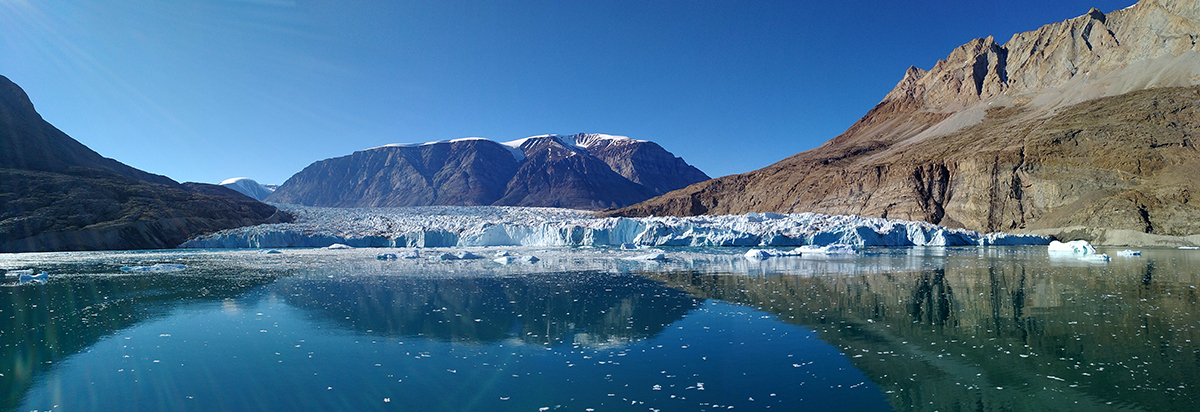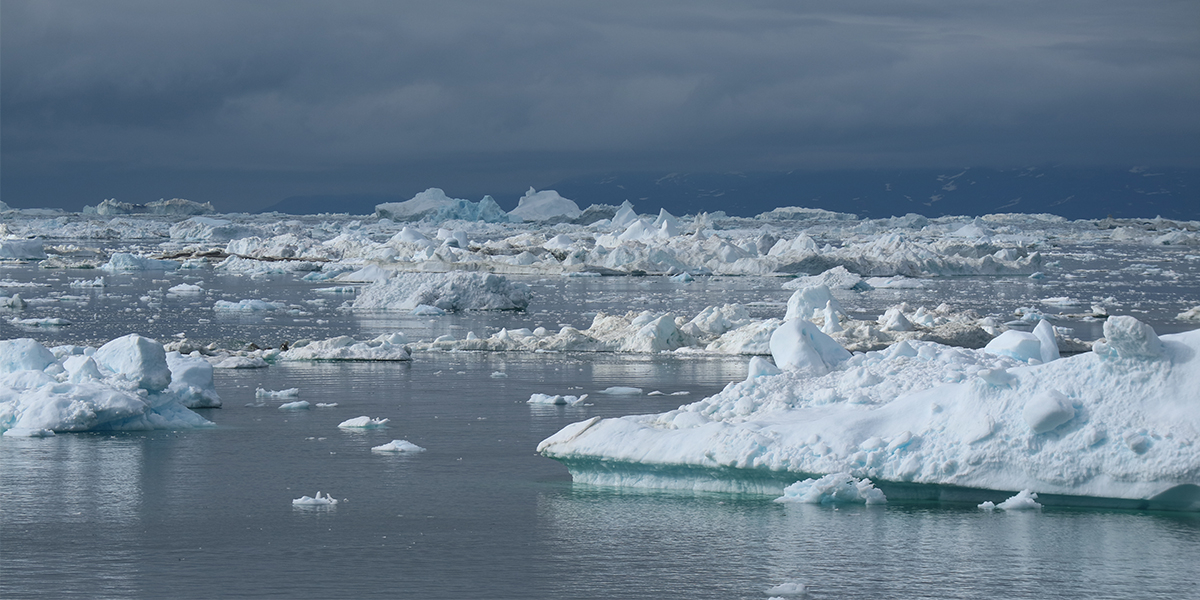Thick sea-ice warms Greenland fjords
“These fjords were practically inaccessible to researchers until quite recently because the sea-ice was too thick—they are some of the least-studied areas on the planet, and require a large icebreaker to reach them, even in the summer,” says Christian Stranne, lead author of the paper. The inaccessibility and sea-ice build-up is due to the direction of Arctic Ocean currents; the Beaufort Gyre and Transpolar Drift push ice from across the Arctic up against the northern Greenland coast.

The paper is based on measurements made during the Petermann 2015 and Ryder 2019 expeditions, when the Swedish icebreaker Oden made detailed studies of Petermann Fjord and Sherard Osborn Fjord in northern Greenland. Even in summer, the entrance to Sherard Osborn Fjord on the northern coast of Greenland is blocked by thick sea-ice, but the more southerly located Petermann Fjord has for several years opened to the Nares Strait, connecting the Arctic Ocean with Baffin Bay. Both fjords host large glaciers with floating ice tongues extending from Greenland glaciers many kilometers into the fjords.
In 2019, air temperatures in northern Greenland reached record highs. Despite similar high air temperatures and conditions, Petermann Fjord’s near surface sea temperatures never exceeded 0ºC. “But in the Sherard Osborn Fjord, cut off from the open ocean by thick sea-ice, near surface sea temperatures reached 4ºC—which was 3ºC higher than any previous sea water measurement north of Greenland,” explains Stranne.
Summertime melt produces a warm freshwater layer floating atop saltier water in the fjord; here the sea-ice barrier trapped this meltwater inside the fjord. Because of the difference in salt content, the surface water became isolated from the water below and warmed strongly due to intense solar heating. Such warmer water temperatures can contribute to faster melting of the Ryder Glacier in Sherard Osborn Fjord, as well as changing the biogeochemistry in the fjord waters. Conversely, the researchers suggest, that neighboring Petermann Fjord, which was open to the sea during 2015 and 2019, experienced colder surface water temperatures because its surface water was not isolated within the fjord by a sea-ice barrier.

Lorenz Meire, oceanographer at NIOZ supported by a VENI NWO grant, contributed to analysis of the biogeochemical data collected during the cruise. Meire has, during several years, investigated the influence of melting land ice on the coastal seas around Greenland. “The Arctic region is a focal point in the research into climate change. The climate is warming faster than elsewhere on earth. This new studies confirms that even in one of the most remote place in the Greenland, the impact of a warming planet can be felt. Understanding the role the ocean plays in melting the Greenland Ice Sheet is crucial as it provides insights on the vulnerability of the Ice Sheet and better projections on sea level rise.”
Publication:
Christian Stranne, Johan Nilsson, Adam Ulfsbo, Matt O’Regan, Helen K. Coxall, Lorenz Meire, Julia Muchowski, Larry A. Mayer, Volker Brüchert, Jonas Frederiksson, Brett Thornton, Julek Chawarski, Gabriel West, Elizabeth Weidner, and Martin Jakobsson,
The climate sensitivity of northern Greenland fjords is amplified through sea-ice damming, Communications Earth & Environment, 2021 DOI: 10.1038/s43247-021-00140-8 https://www.nature.com/commsenv